Abstract
A new procedure for the radioimmunoassay of l-triiodothyronine (T3) in human plasma is described in which the iodothyronines are separated from the plasma proteins before incubation with a specific antiserum to T3. The antibody bound and free T3 are separated with dextran-coated charcoal. In this system, the mean recovery of T3 added to plasma was 97.9% and both in vitro conversion of l-thyroxine (T4) to T3 and cross-reaction between T4 and the anti-T3 antibody were undetectable (less than 0.1%). The assay procedure allowed the measurement of T3 in up to 0.5 ml of plasma resulting in improved assay sensitivity (6 ng/100 ml). The mean plasma T3 in normal subjects was 146±24 ng/100 ml (sd). Mean T3 concentration was increased in hyperthyroidism (665±289 ng/100 ml) and decreased in hypothyroidism (44±26 ng/100 ml). In patients with severe hypothyroidism, plasma T3 was between 7 and 30 ng/100 ml. Plasma T3 concentration was relatively constant throughout the day in three euthyroid subjects. In contrast, in hypothyroid subjects on replacement therapy with T3, a T4: T3 combination or desiccated thyroid plasma T3 was markedly elevated for several hours after ingestion of the medication. Plasma T3 was unchanged throughout the day in patients treated with T4. Thus, insofar as plasma T3 levels are concerned, replacement therapy with T4 appears to mimic the euthyroid state more closely than other preparations.
Full text
PDF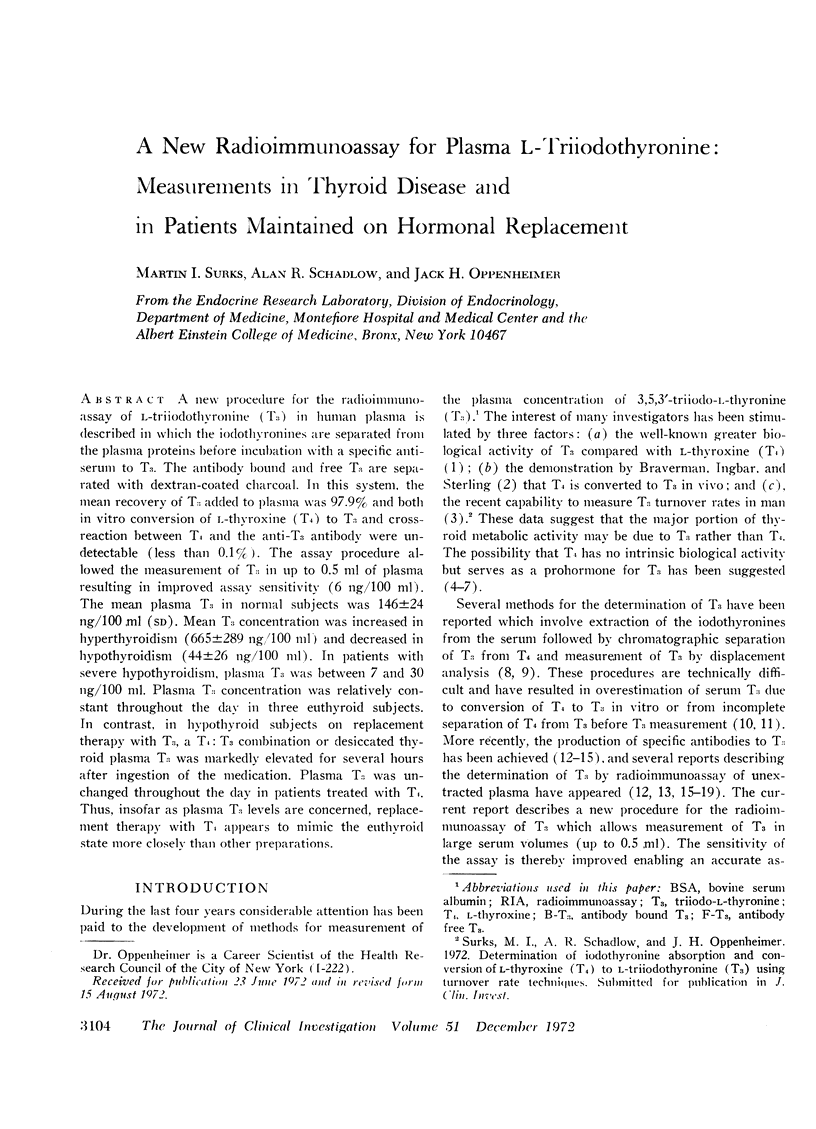
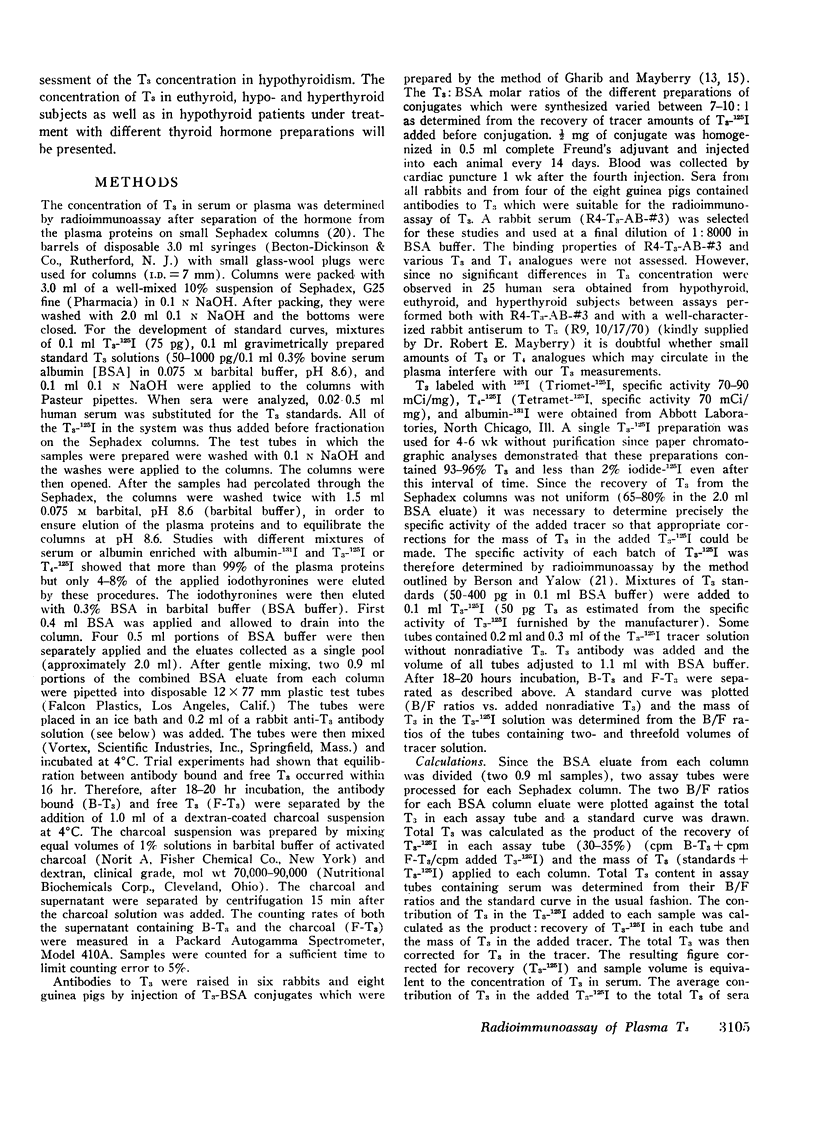
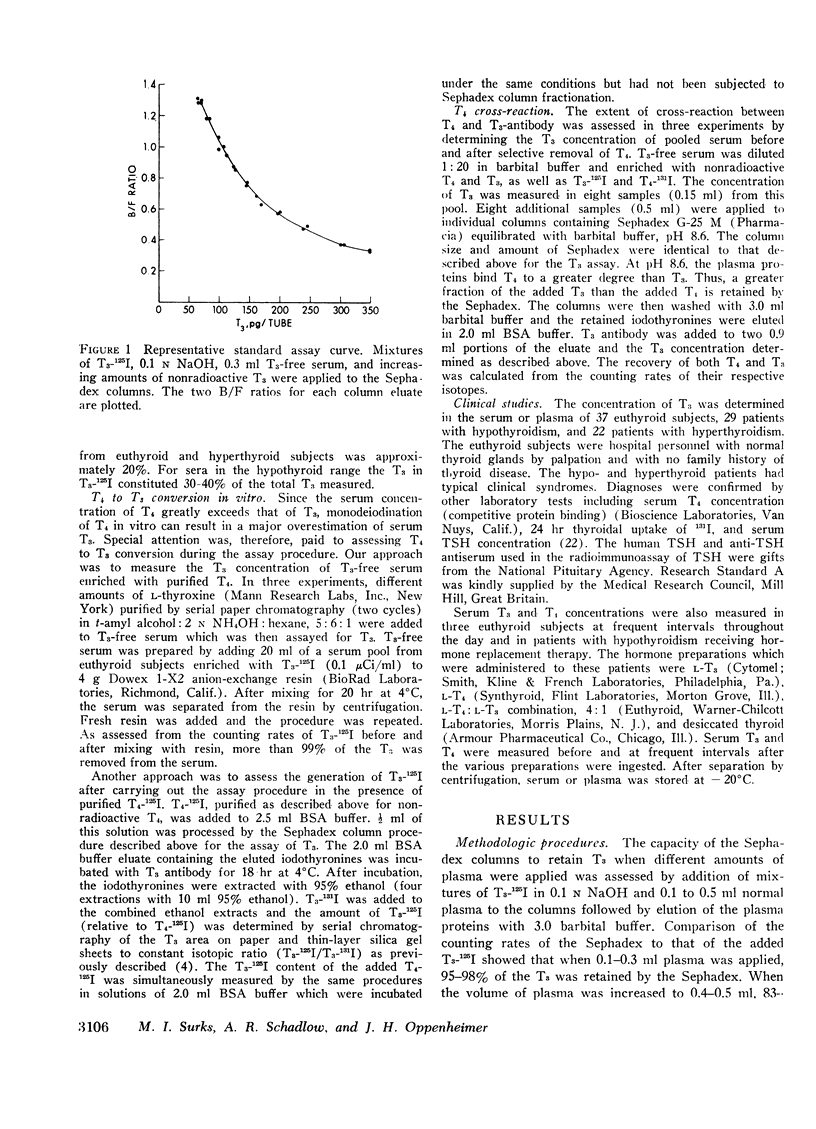
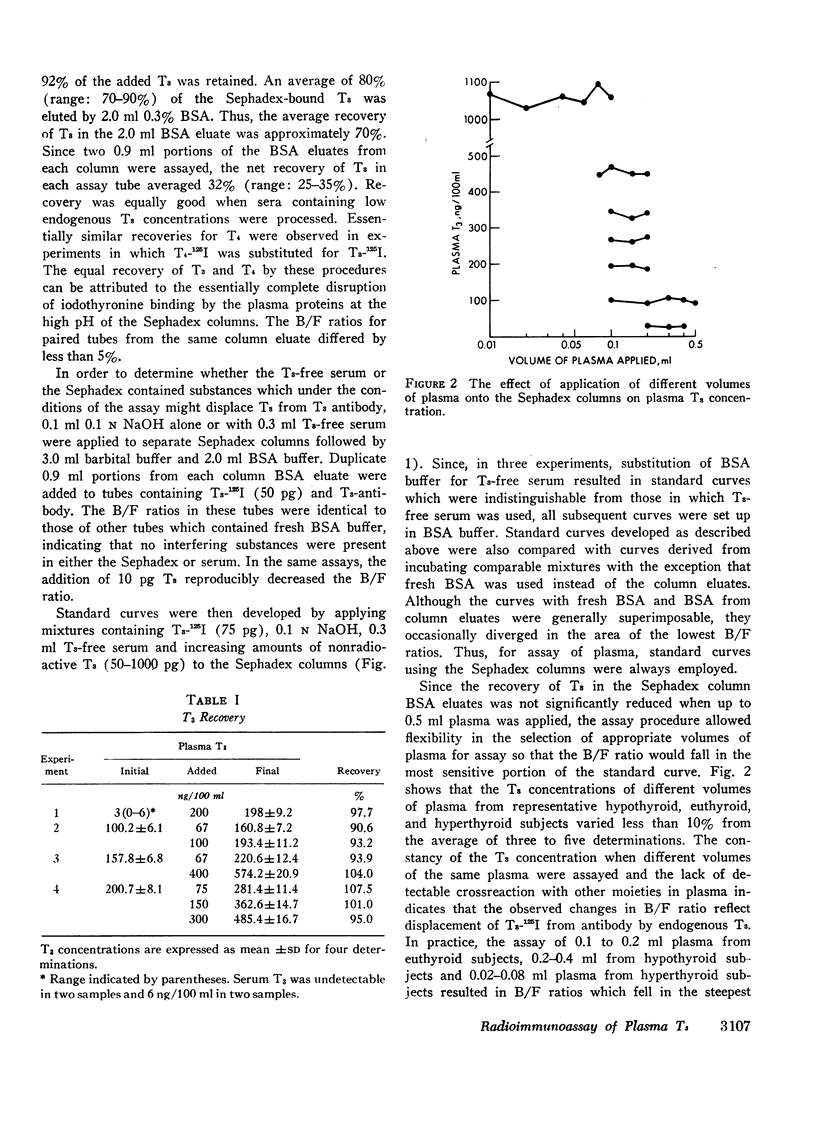
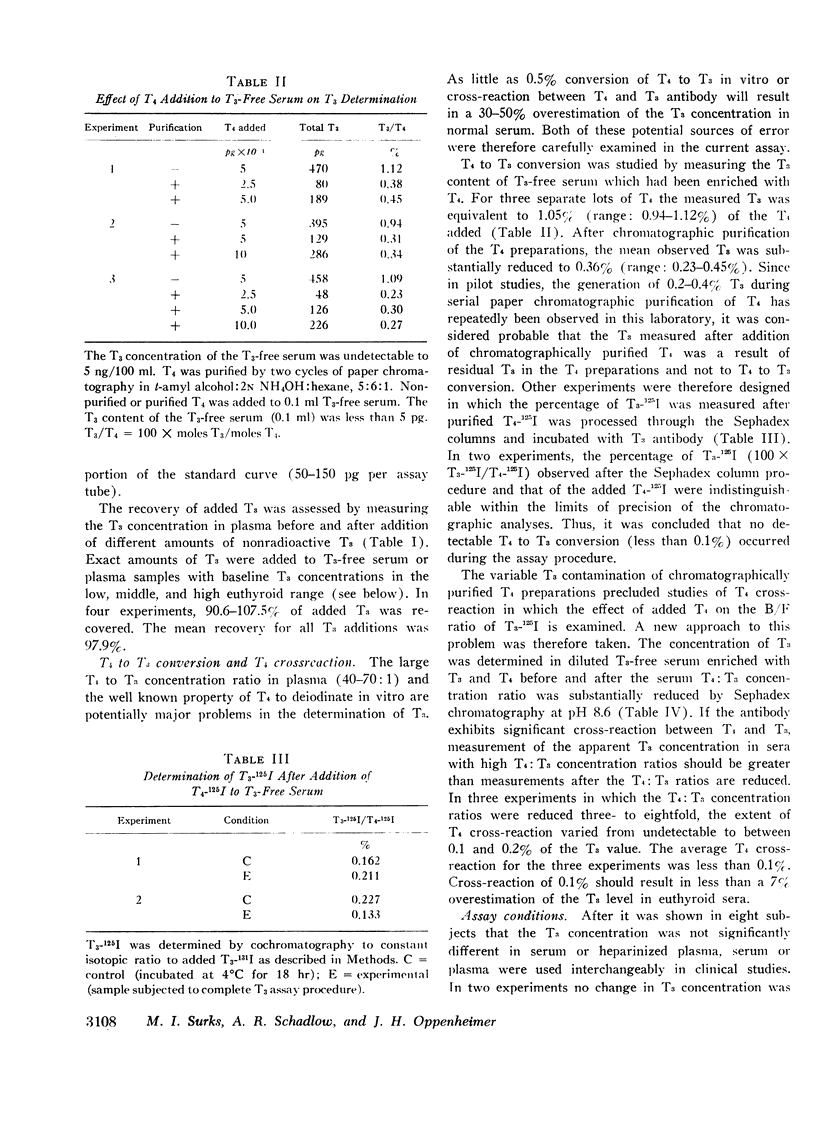
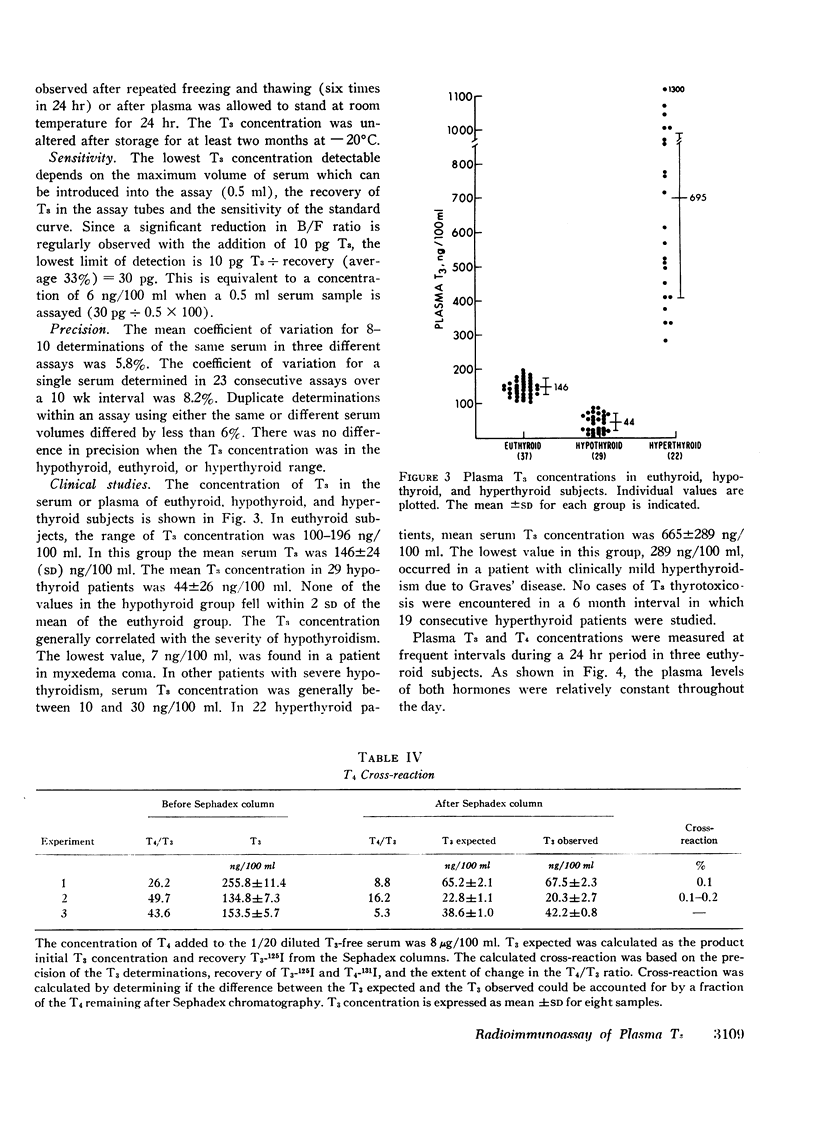
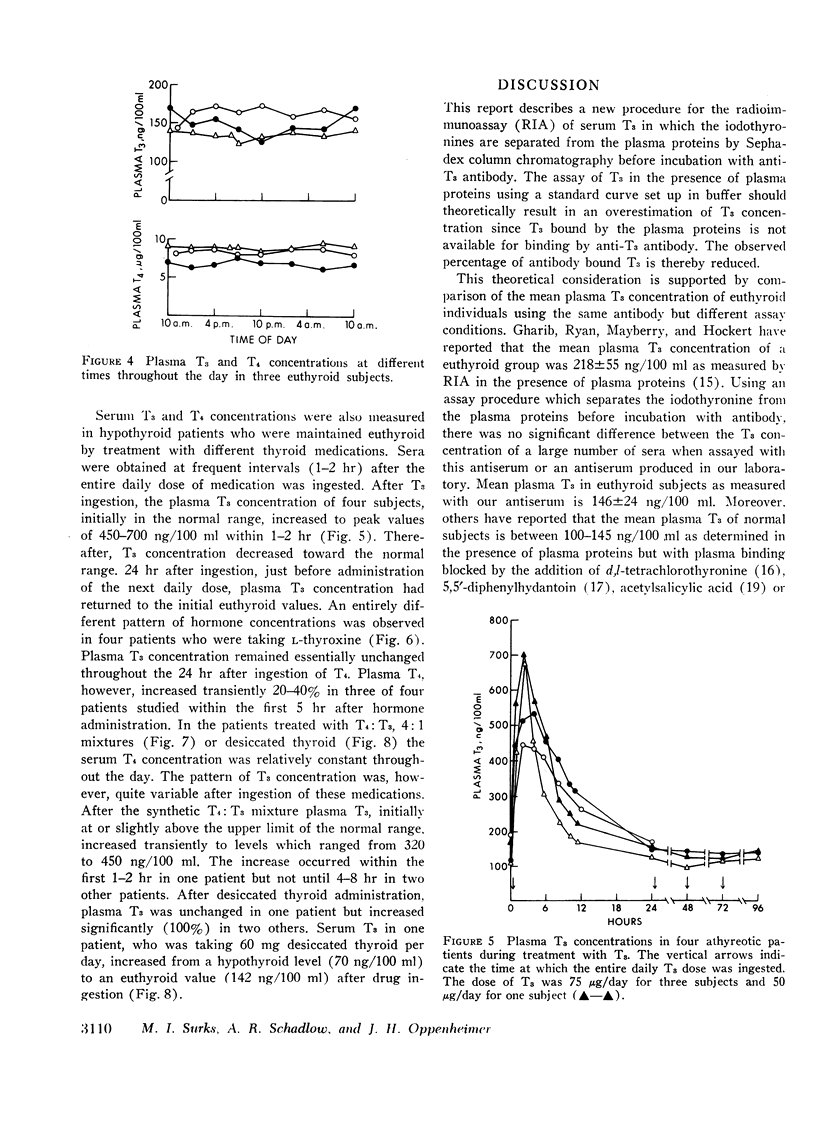
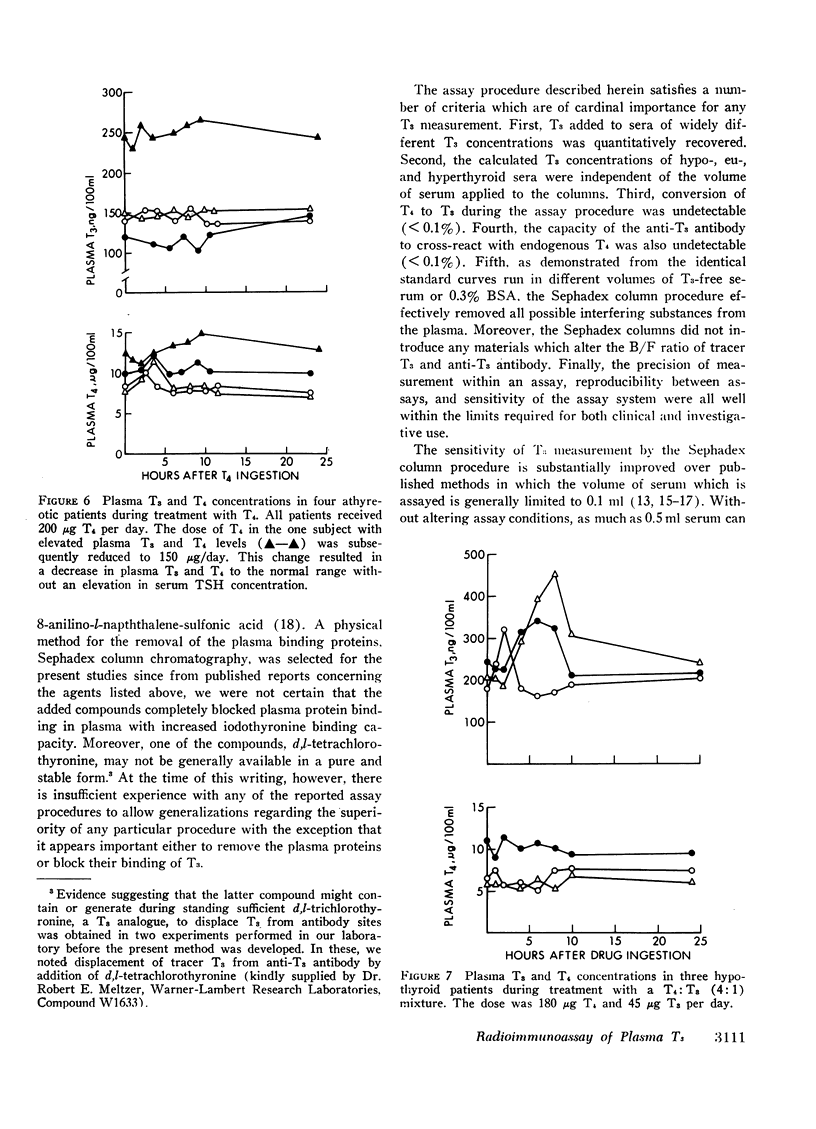
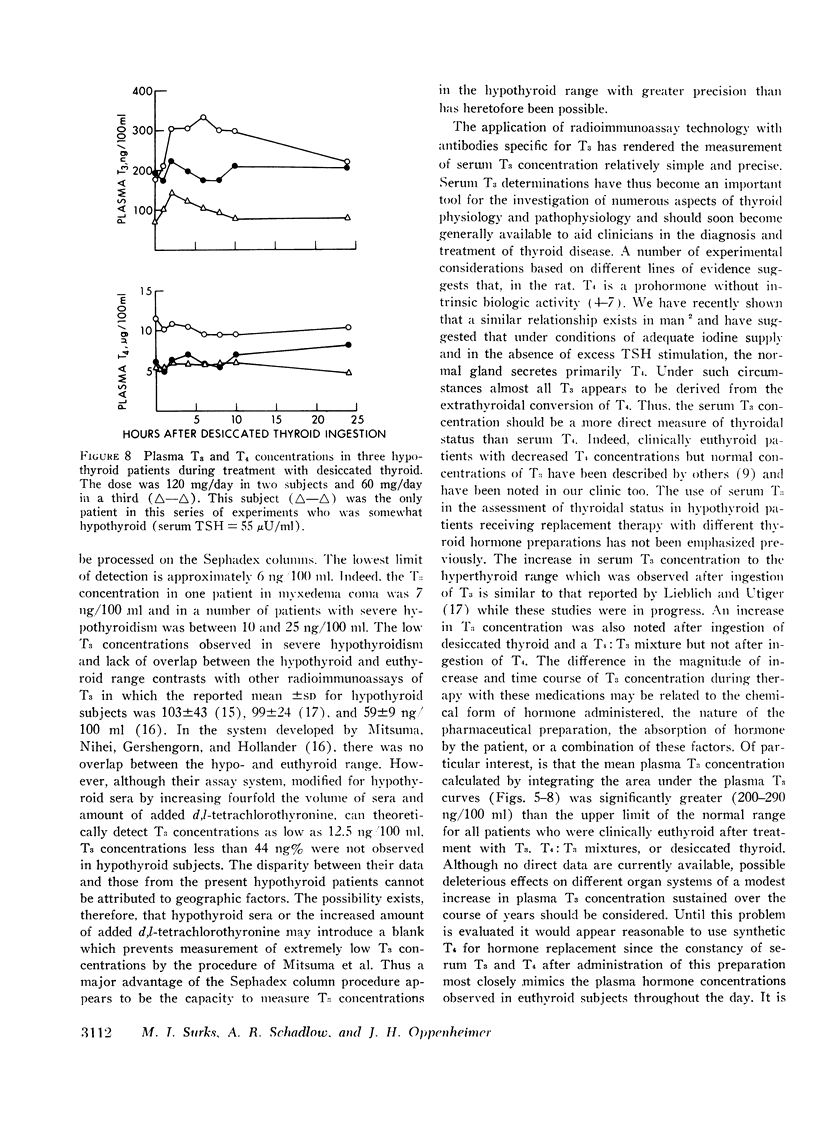
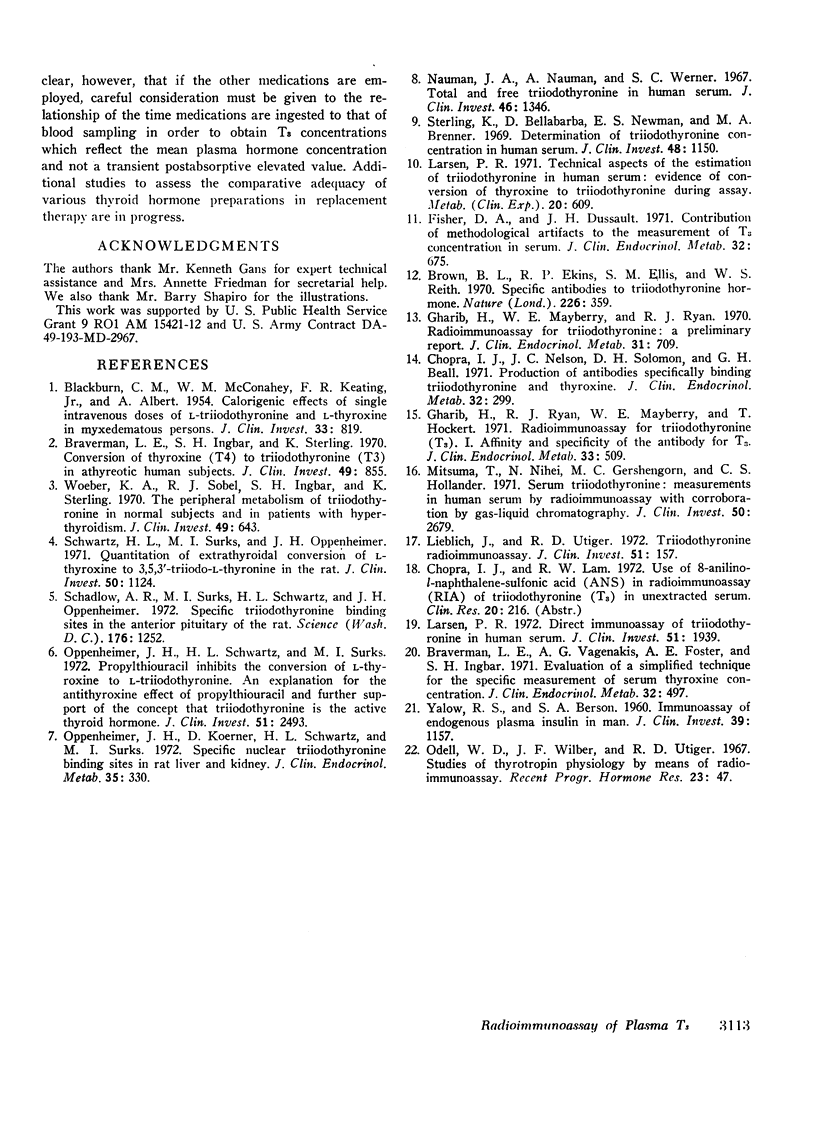
Selected References
These references are in PubMed. This may not be the complete list of references from this article.
- BLACKBURN C. M., McCONAHEY W. M., KEATING F. R., Jr, ALBERT A. Calorigenic effects of single intravenous doses of L-triiodothyronine and L-thyroxine in myxedematous persons. J Clin Invest. 1954 Jun;33(6):819–824. doi: 10.1172/JCI102953. [DOI] [PMC free article] [PubMed] [Google Scholar]
- Braverman L. E., Ingbar S. H., Sterling K. Conversion of thyroxine (T4) to triiodothyronine (T3) in athyreotic human subjects. J Clin Invest. 1970 May;49(5):855–864. doi: 10.1172/JCI106304. [DOI] [PMC free article] [PubMed] [Google Scholar]
- Braverman L. E., Vagenakis A. G., Foster A. E., Ingbar S. H. Evaluation of a simplified technique for the specific measurement of serum thyroxine concentration. J Clin Endocrinol Metab. 1971 Apr;32(4):497–502. doi: 10.1210/jcem-32-4-497. [DOI] [PubMed] [Google Scholar]
- Brown B. L., Ekins R. P., Ellis S. M., Reith W. S. Specific antibodies to triiodothyronine hormone. Nature. 1970 Apr 25;226(5243):359–359. doi: 10.1038/226359a0. [DOI] [PubMed] [Google Scholar]
- Chopra I. J., Nelson J. C., Solomon D. H., Beall G. N. Production of antibodies specifically binding triiodothyronine and thyroxine. J Clin Endocrinol Metab. 1971 Mar;32(3):299–308. doi: 10.1210/jcem-32-3-299. [DOI] [PubMed] [Google Scholar]
- Fisher D. A., Dussault J. H. Contribution of methodological artifacts to the measurement of T3 concentration in serum. J Clin Endocrinol Metab. 1971 May;32(5):675–679. doi: 10.1210/jcem-32-5-675. [DOI] [PubMed] [Google Scholar]
- Gharib H., Mayberry W. E., Ryan R. J. Radioimmunoassay for triiodothyronine: A preliminary report. J Clin Endocrinol Metab. 1970 Dec;31(6):709–712. doi: 10.1210/jcem-31-6-709. [DOI] [PubMed] [Google Scholar]
- Gharib H., Ryan R. J., Mayberry W. E., Hockert T. Radioimmunoassay for triiodothyronine (T 3 ): I. Affinity and specificity of the antibody for T 3 . J Clin Endocrinol Metab. 1971 Sep;33(3):509–516. doi: 10.1210/jcem-33-3-509. [DOI] [PubMed] [Google Scholar]
- Larsen P. R. Direct immunoassay of triiodothyronine in human serum. J Clin Invest. 1972 Aug;51(8):1939–1949. doi: 10.1172/JCI107000. [DOI] [PMC free article] [PubMed] [Google Scholar]
- Larsen P. R. Technical aspects of the estimation of triiodothyronine in human serum: evidence of conversion of thyroxine to triiodothyronine during assay. Metabolism. 1971 Jun;20(6):609–624. doi: 10.1016/0026-0495(71)90009-6. [DOI] [PubMed] [Google Scholar]
- Lieblich J., Utiger R. D. Triiodothyronine radioimmunoassay. J Clin Invest. 1972 Jan;51(1):157–166. doi: 10.1172/JCI106786. [DOI] [PMC free article] [PubMed] [Google Scholar]
- Mitsuma T., Nihei N., Gershengorn M. C., Hollander C. S. Serum triiodothyronine: measurements in human serum by radioimmunoassay with corroboration by gas-liquid chromatography. J Clin Invest. 1971 Dec;50(12):2679–2688. doi: 10.1172/JCI106769. [DOI] [PMC free article] [PubMed] [Google Scholar]
- Nauman J. A., Nauman A., Werner S. C. Total and free triiodothyronine in human serum. J Clin Invest. 1967 Aug;46(8):1346–1355. doi: 10.1172/JCI105627. [DOI] [PMC free article] [PubMed] [Google Scholar]
- Odell W. D., Wilber J. F., Utiger R. D. Studies of thyrotropin physiology by means of radioimmunoassay. Recent Prog Horm Res. 1967;23:47–85. doi: 10.1016/b978-1-4831-9826-2.50005-2. [DOI] [PubMed] [Google Scholar]
- Oppenheimer J. H., Koerner D., Schwartz H. L., Surks M. I. Specific nuclear triiodothyronine binding sites in rat liver and kidney. J Clin Endocrinol Metab. 1972 Aug;35(2):330–333. doi: 10.1210/jcem-35-2-330. [DOI] [PubMed] [Google Scholar]
- Oppenheimer J. H., Schwartz H. L., Surks M. I. Propylthiouracil inhibits the conversion of L-thyroxine to L-triiodothyronine. An explanation of the antithyroxine effect of propylthiouracil and evidence supporting the concept that triiodothyronine is the active thyroid hormone. J Clin Invest. 1972 Sep;51(9):2493–2497. doi: 10.1172/JCI107063. [DOI] [PMC free article] [PubMed] [Google Scholar]
- Schadlow A. R., Surks M. I., Schwartz H. L., Oppenheimer J. H. Specific triiodothyronine binding sites in the anterior pituitary of the rat. Science. 1972 Jun 16;176(4040):1252–1254. doi: 10.1126/science.176.4040.1252. [DOI] [PubMed] [Google Scholar]
- Schwartz H. L., Surks M. I., Oppenheimer J. H. Quantitation of extrathyroidal conversion of L-thyroxine to 3,5,3'-triiodo-L-thyronine in the rat. J Clin Invest. 1971 May;50(5):1124–1130. doi: 10.1172/JCI106584. [DOI] [PMC free article] [PubMed] [Google Scholar]
- Sterling K., Bellabarba D., Newman E. S., Brenner M. A. Determination of triiodothyronine concentration in human serum. J Clin Invest. 1969 Jun;48(6):1150–1158. doi: 10.1172/JCI106072. [DOI] [PMC free article] [PubMed] [Google Scholar]
- Woeber K. A., Sobel R. J., Ingbar S. H., Sterling K. The peripheral metabolism of triiodothyronine in normal subjects and in patients with hyperthyroidism. J Clin Invest. 1970 Apr;49(4):643–649. doi: 10.1172/JCI106275. [DOI] [PMC free article] [PubMed] [Google Scholar]
- YALOW R. S., BERSON S. A. Immunoassay of endogenous plasma insulin in man. J Clin Invest. 1960 Jul;39:1157–1175. doi: 10.1172/JCI104130. [DOI] [PMC free article] [PubMed] [Google Scholar]


